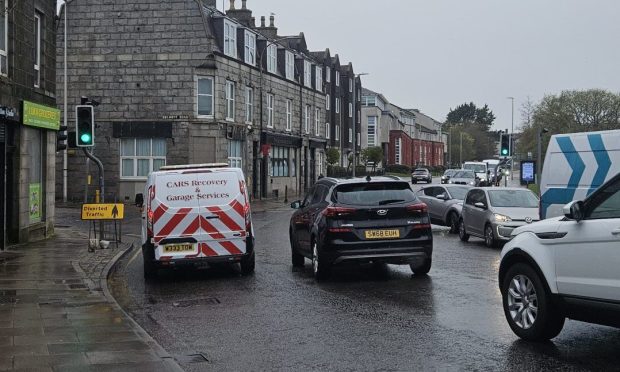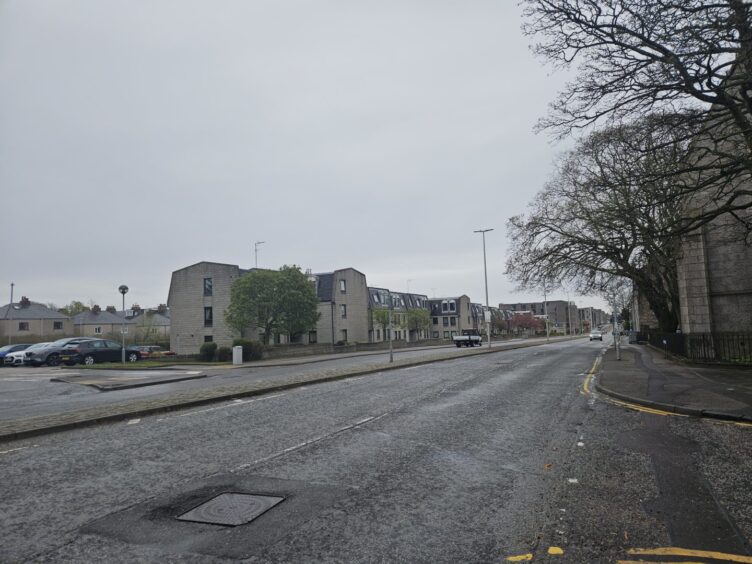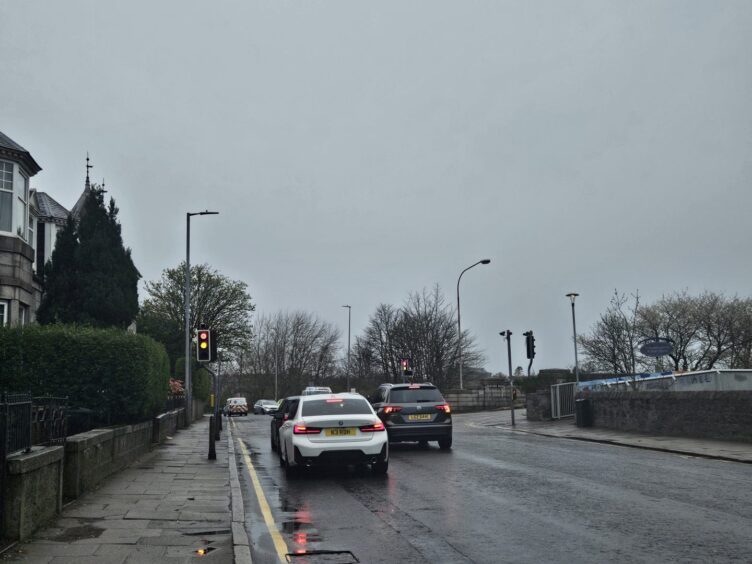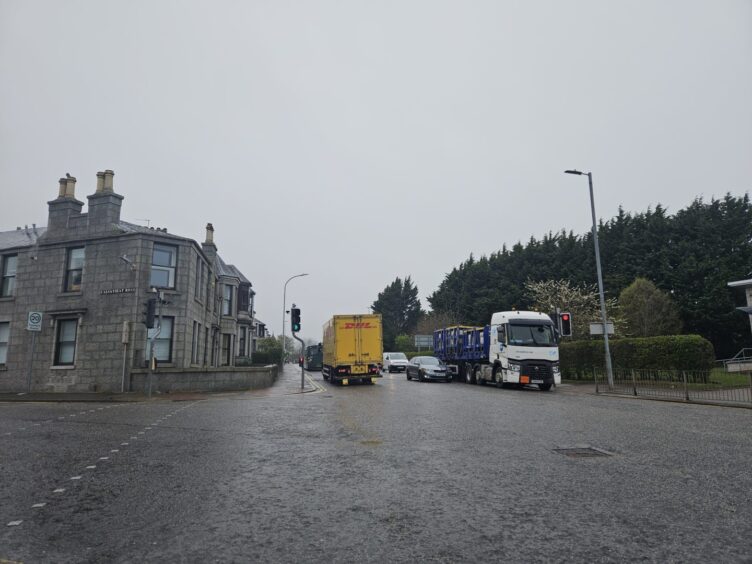Powis Terrace is one of the main routes into Aberdeen city centre — but it can often be a confusing road to navigate.
The A96 road is busy with commuters and larger vehicles like buses, lorries and HGVs trundling in and out of the city.
During peak times, the area can become a bottleneck, forcing streams of traffic to back up on Belmont Road and Bedford Road.
It’s wider than most other city roads and has a central line, albeit the paint has become a bit worn over the years.
And yet, despite the lack of road markings and signage, motorists seem to form four lanes along the stretch.
This can make for a tight squeeze, especially when larger vehicles are on either side of the road.
But how many lanes should Powis Terrace actually have?
How many lanes do you think Powis Terrace has? Let us know in the poll below:
Why is the Aberdeen road confusing?
Powis Place, linked to the Mounthooly roundabout, is a dual-carriageway, meanwhile George Street is only a single-carriageway.
The road on Powis Terrace is narrower than Powis Place, meaning driving northwards from the dual-carriageway can be quite stressful when there’s two busy lanes of traffic trying to squeeze in.
Without road markings it can be unclear where drivers are supposed to go, and there’s frequently a few angry horns blasting as cars get too close to one another or try to file into one lane.
As for drivers travelling southbound between Bedford Road and Powis Place, there are road markings to show which lane they need to be in — directing motorists to go left for Powis Place or stay on the right for George Street.
Even more confusingly, most people treat the stretch of Powis Terrace between Belmont Road and Great Northern Road as a single-lane despite it being the same width as the rest of the road.
And then there’s the junctions…
If there are two lanes of traffic going northbound, the next issue crops up at the junction with Bedford Road.
If there are two lanes of traffic, that means you must be on the right lane to access Bedford Road, and if you aren’t it can be quite tricky to move over in time.
But, this does mean that other motorists do not get stuck behind someone waiting to turn right because there is space to maneuver around.
Finally, the junction with Belmont Road is another confusing spot.
Many people turn left here and so are in the left-hand lane. If you want to go straight ahead towards Great Northern Road it’s easiest to do this in the right-hand lane.
But after navigating the junction at Bedford Road (being in the left lane to go straight ahead), it could be a scramble to get in the right-hand lane. Especially if there are two full lanes of traffic heading in the same direction.
The road seems to narrow here because of the bend and the cars travelling southbound edging forward to turn right onto Belmont Road.
This means if the driver in the left lane is trying to go straight ahead at the same time as the driver in the right lane, it’s a tight, awkward squeeze to file into a single line.
Are there any other confusing roads in Aberdeen? Let us know in the comment section below
What does Aberdeen council say about Powis Terrace?
We decided to ask Aberdeen City Council for a definitive answer, so we could tell our readers exactly how this road is meant to be used.
However, a spokeswoman says the road can basically be used either way.
Although the road is wide enough to fit two “informal” lanes of cars going in both directions, it is not wide enough to be marked for two lanes.
According to the spokeswoman, this “maximises” the volume of traffic, but means wider vehicles can travel through single-file when necessary.
She said: “Due to various constraints, including the railway line and rail bridges, the carriageway along Powis Terrace, between Powis Place and Belmont Road, has a restricted width and is not able to fully accommodate two marked lanes in both directions.
“This route has a centre line and drivers are able to use an informal two-lane arrangement when conditions permit. This maximises the volume of traffic but enables wider vehicles to travel through singularly when required.”







Conversation